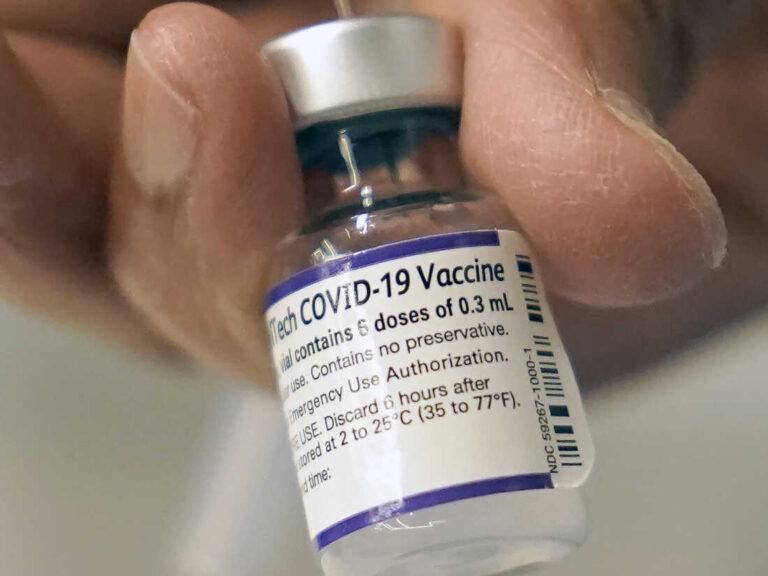Within eight months, the Liver King had amassed a million and a half followers on Instagram and nearly three million on TikTok. He was mellow at first, but he embraced the new persona, growing crasser and more meme-worthy, and less clothed. (On a podcast in March, 2022, he said that the Liver King “broke out of his cage, and he fucking ate Brian Johnson.”) Most of his videos centered on eating meat, lifting heavy stuff, and doing punishing, unorthodox workouts. His body, he said, was all natural, the product not of steroids but of exercise and eating animals.
The Liver King’s premise, a familiar one by now, is that we are mismatched with the modern world and that many of our problems can be solved by reconnecting with long-lost ways. He insists on nine ancestral tenets. These include reasonable suggestions like “sleep,” “move,” and “bond,” but, as he once explained, “if I tell you all nine, you don’t remember anything.” Instead, he boiled his recommendations down to one: “I say, ‘Eat liver, because liver is king.’ ” The best-selling, stand-alone product on ancestralsupplements.com is Grassfed Beef Liver.
The craze for eating the way our ancestors did is nothing new; it has been more than two decades since the exercise physiologist Loren Cordain published “The Paleo Diet: Lose Weight and Get Healthy by Eating the Food You Were Designed to Eat” (2001), helping launch a billion-dollar industry. But the Liver King, along with a crew of other “meatfluencers,” has pushed paleo to an extreme of carnivory. They maintain that humans evolved to kill animals similar in size and constitution to domesticated cattle, to devour their organs (often raw), and to eat vegetables only in the most desperate of circumstances.
“Forget the leaves and fibrous tubers, we’re going hunting!” Paul Saladino (IG followers: 1.6M) writes in “The Carnivore Code,” the closest thing the new movement has to a manifesto. He asserts that “this approach appears to be exactly what our ancestors did.” (Saladino co-owns a supplement company, Heart & Soil, with the Liver King.) According to “The Carnivore Code,” plants are poison—they don’t want to be eaten, and have, as a result, evolved defensive chemicals designed to disrupt your digestion. Likewise, in “The Carnivore Diet,” Shawn Baker (IG followers: 319K) says that the most efficient way proto-humans got protein and calories was “to take down a big, fatty, energy-filled megafaunal animal.” They may have nibbled on the occasional fruit or nut, he admits, but the time and energy needed to get the same payoff would have been “greater by at least an order of magnitude.” The Liver King himself came up with the pithiest tagline: “Why eat vegetables when you can eat testicles?”
The killer-ape theory seeped into the mainstream. In 1955, Dart, then based at the University of the Witwatersrand, met the playwright Robert Ardrey, who was in South Africa for a reporting trip. Like a convert seeing the holy truth, Ardrey came away transformed. He was convinced that “the predatory transition” not only made us human but also explained what he described as “man’s bloody history, his eternal aggression, his irrational, self-destroying inexorable pursuit of death for death’s sake.” Ardrey was inspired to write the “Nature of Man” series, a set of books about human nature and evolution, published between 1961 and 1976. Time later named “African Genesis,” the first in the series, the most notable nonfiction book of the sixties. It was cited as an influence on Stanley Kubrick’s film “2001: A Space Odyssey” (1968), whose opening sequence showed primate violence as a turning point in the development of our species.
The meeting also revealed problems with the meat-centric story. Dart had asserted that “all prehistoric men and the most primitive of living human beings are hunters, i.e., flesh eaters.” But contributors to “Man the Hunter” showed how one-sided this perspective was. The anthropologist Richard Lee reported that the !Kung, one of the so-called Bushman people of Southern Africa, got two-thirds of their calories from plants. Nor were they an exception. When he compared fifty-eight foraging societies from around the world, Lee found that half got the majority of their calories from plant foods; another eighteen relied mostly on fishing. Only eleven—less than a fifth—relied on hunting as their primary means of subsistence, and all but one were limited to either the highest or the lowest latitudes, far beyond our African homeland.
Pontzer shows just how far the consensus has shifted. Dart had insisted that Australopithecus, an early group of human ancestors, gulped down blood and guts, and yet scratch patterns on their molars suggest that they were lovers of tubers. Our more recent forebears ate plants, too, including ones vilified by paleo advocates. Consider Neanderthal diets, which Rebecca Wragg Sykes covers in vivid detail in “Kindred: Neanderthal Life, Love, Death and Art.” Neanderthals certainly ate big beasts; sites are filled with the bones of butchered bison and red deer—there are even indications that they took down mammoths. Yet Neanderthals living in warm, wet environs had tooth-wear patterns similar to those of agricultural peoples who eat lots of fibrous plants. Further evidence has come from investigating Neanderthals’ dental calculus—that is, from probing their plaque. Shortly before he died, an individual known as Shanidar 3 consumed dates, a lentil-like plant, and an unidentified tuber or root. The remains of two adults found in Belgium had traces of grasses and water-lily-root starches, suggesting that they had foraged for plant food. A sample from El Sidrón, in Spain, had no large-mammal DNA, but it turned up matches for pine, mushroom, and moss. Scattered morsels of prehistoric diets reveal an enduring taste for veggies.
Living off flesh alone is not easy, though, and Cho lays out suggestions for how to survive. Too much lean protein can cause problems, so make sure at least seventy per cent of your calories come from fat. Too little mastication can lead to constipation, so try to chew each piece of meat twenty to thirty times. Carnivores tend to have messed-up thirst cues, so drink more often than might feel natural. If you don’t like meat, stop snacking until you’re so hungry that it becomes appealing. To ease the transition, Cho offers various weeklong meal plans, along with helpful tables of permissible items and their nutritional statistics.
Some meatfluencers stress that human beings are animals and maintain that, if allowed to eat according to our animal instincts, we will favor a meaty menu. But the biologists David Raubenheimer and Stephen J. Simpson have been investigating animal alimentation for more than thirty years, and their new book, “Eat Like the Animals,” suggests that the meatfluencers have it all wrong. The authors started collaborating at Oxford, studying the eating preferences of locusts (grasshoppers, basically). First, they found that locusts preferred a certain ratio of carbohydrates to protein. When forced to live on foods higher in carbs and lower in protein, the insects ate a lot, becoming obese, and took longer to molt to adulthood. Conversely, when put on the insect version of the Atkins diet, they ate far fewer calories and were less likely to make it to adulthood. Second, they found that locusts with a decent food selection always ended up with near-identical ratios of protein and carbohydrates. “It’s as if, regardless of whether we were offered meat and pasta, or egg and bread, or beans and rice, or fish and potatoes, we always consumed the exact same balance of protein and carbs.” The critters somehow track which nutrients are in which foods.
These findings aren’t limited to insects. Raubenheimer and Simpson have since determined that the pattern is widespread across the animal kingdom, from beetles to baboons. And they have found that protein-loaded diets don’t just age animals; they kill them faster. “Our sexy, lean mice who ate high-protein, low-carb diets were the shortest lived of all,” they wrote of research published in 2014. “They made great-looking middle-aged corpses.”
Raubenheimer and Simpson find possible lessons here about human metabolism. As ultra-processed foods become stripped of protein, we behave like their protein-deprived locusts, becoming bloated on carbs. The elimination of fibre exacerbates the problem, they write, removing a brake that would otherwise slow eating, fill our stomachs, and curb hunger. At the same time, their work implies a Faustian allure to keto, carnivory, and other protein-heavy regimens. Cutting out carbs may make us skinnier and accelerate tissue development, shifting our bodies into a “growth and reproduction pathway.” But this comes at the expense of longevity. Repair and maintenance systems are sidelined. Misfolded proteins and other cellular junk accumulate. Pushed into overdrive, the body falters.
According to Raubenheimer and Simpson, two canonically healthy populations—the Okinawans, in Japan, who become centenarians at five times the rate of the rest of the developed world, and the Tsimané, of the Bolivian Amazon, who have the lowest incidence of cardiovascular disease ever recorded—consume diets that are, respectively, just nine and fourteen per cent protein. Most of their calories come from fibrous starches, such as plantain, cassava, or sweet potato. Raubenheimer and Simpson don’t propose that readers become Japanese islanders or remote Amazonians, and although they present suggested protein intakes, they warn against following them too strictly. Instead, they advise cutting out ultra-processed foods; finding good sources of fats, proteins, and fibre-loaded carbs; and listening to your appetite (unless you crave savory snack foods, which, they point out, trick the body into thinking that it’s getting protein when it’s not). “Our appetites are better gauges than our calculators,” they conclude.
Is it possible that the meatfluencers are only a muscly manifestation of a larger awareness—that our food system is failing us? In “Eating to Extinction,” Dan Saladino, who’s no relation to the carnivore Paul, urges readers to “consider what the past can teach us about how to inhabit the world now and in the future.” Taras Grescoe’s “The Lost Supper” argues, similarly, that when it comes to the plants and animals we’ve subsisted on for generations “the way forward lies in reviving them, cultivating them, herding them, and consuming them.”
For Grescoe and Saladino, the crisis of modernity is not, as many meatfluencers insist, an excess of seed oils, carbohydrates, and plant-defense chemicals but a collapse of diversity. Grescoe takes the reader to a twenty-three-thousand-year-old site in eastern Africa, where foragers once feasted on twenty species of mammal, sixteen families of bird, and nearly a hundred and fifty kinds of nuts, seeds, fruits, and legumes. He transports us to Çatalhöyük, a bustling Neolithic settlement in Anatolia, where the fare included sheep, goats, wild cattle, wild boars, waterfowl, and an impressive array of plant foods, such as plums, figs, acorns, almonds, hackberries, pistachios, and wild mustard.
It may look as if modern diets are wonderfully varied, both Grescoe and Saladino argue, but by historical standards they’re not. As a species, humans once ate thousands of plant foods, but only a hundred and fifty are cultivated at scale for food today, three of which—rice, wheat, and maize—constitute fifty per cent of all calories. Even within that trio, diversity is crumbling. In the twentieth century, American-grown hybrid corn came to account for fifty per cent of globally traded maize. Thousands of local varieties have been displaced. The result was a boom in calories but also a more fragile food system, as was made clear when a fungal blight ruined a billion bushels of American maize in 1970.
For opponents of meat eating, this loss of diversity is a call to arms. In “No Meat Required: The Cultural History and Culinary Future of Plant-Based Eating,” Alicia Kennedy says that campaigns against ingesting flesh are about “claiming biodiversity and rebuilding the food system in a way that supports culture, tradition, and gastronomy.” Their argument comes down to an ecological observation: it takes about a hundred times more land to produce a calorie of lamb or beef than it does to produce a plant-based alternative. Given that half the world’s ice- and desert-free land is used for agriculture, shifting to a fully plant-based diet would unlock vast resources. By one estimate, agricultural land use around the world would decrease by about three billion hectares—roughly four times the area of the continental United States.
How do members of the carnivore crew respond? Some, like Judy Cho and Paul Saladino, argue that the consensus is wrong and that, as Cho says, “cows may be the way to save the planet.” They blame environmental devastation on such factors as grain monocultures and crop-driven deforestation—never mind that some eighty per cent of farmland is used for livestock feed. Others take up a vaporously ideological form of opposition.
Consider the shtick of Raw Egg Nationalist (X followers: 182.8K), a right-wing conspiracy theorist who dispenses “red-pill fitness” to his fans. “The enemy today is what I like to call ‘soy globalism,’ ” he explained on Tucker Carlson’s 2022 Fox special “The End of Men.” “The globalists want you to be fat, sick, depressed, and isolated—the better to control you and to milk you for as much economic value as they can, before they kill you.” His solution aligned nationalism and masculinity: strong men build strong nations, which defend against soy globalism. “And that’s where raw eggs come in. Eggs are a superfood, packed with protein, fats, vitamins, minerals, anabolic cholesterol—the absolute opposite of the disgusting rubbish the globalists want us to eat.” He didn’t end at eggs. If it has cholesterol, it qualifies: “That means butter, that means red meat, organ meat, eating liver, drinking raw milk, eating raw-milk products.” He warned, “Eating a low-fat vegetarian diet is about the worst thing you can do. It just tanks testosterone.”
On December 1, 2022, after incriminating e-mails were shared online, the Liver King released a video on YouTube titled “Liver King confession . . . I lied.” Bare-chested and seated on what looked like a throne, he told the camera, “Yes, I’ve done steroids. And, yes, I’m on steroids.” He defended himself by returning to the issues that inspired him to preach the ancestral tenets. “Our people are hurting at record rates, with depression, autoimmune, anxiety, infertility, low ambition in life. Our young men are hurting the most, feeling lost, weak, and submissive.”
Pore over materials on carnivory and the overwhelming impression is that men are endangered. They were once strong. They lived with nature and had stone-hard chests. They killed or were killed. But not anymore. Now they are either scrawny or obese. They have plummeting sperm counts and middling testosterone levels. “Alexander the Great conquered the world at age 25,” posted Carnivore Aurelius (IG followers: 717K), an anonymous meme-maker who dances between satire and sincerity. “The average 25 year old today has a panic attack if they leave their vape at home. WTF happened to men?”
Men, we read more and more, are falling behind. Just seventy-four men finish college for every hundred women. The model of a provider who supports a family through mostly physical labor is a diminishing prospect. Because meat is linked to manhood, carnivory promises a way to pump up a shrivelled birthright.
The Liver King understood this from the start. His very first video was ostensibly about a Paleolithic life style, but it looked like an ad for masculinity. It starred a semi-nude Viking hurling a spear, throwing a heavy ball, and benching a barbell with thick chains hanging down. It featured lightning, a bonfire, raw meat sliced with a chef’s knife, and a marinated lamb chop thrown on a grill. There were symbols of status and wealth throughout, from the landscaping to the lavish home gym.
Carnivory conjures up an Edenic past that contrasts with our current discontents: a mythical time when men were manly and bodies were fit and food was real and natural. Cleanse yourself of modern corruption, it urges, and the world and your body will be renewed. You will be strong. Your family will be healthy. The land will recover. In “The Carnivore Code,” Paul Saladino describes the zone you inhabit when consuming a meat-only diet as “Zion,” “Shangri-La,” and “the Promised Land,” a “verdant” coastline where you can hunt “healthy ruminants” drinking from “clean, flowing streams.”
It’s familiar terrain. The most successful diets of the past half century benefitted from similar marketing. Alluring additives are poisoning our bodies, their advocates insisted. Freedom and vigor come from purging them, from reënacting the lifeways of make-believe ancestors. When, in the nineteen-seventies, Nathan Pritikin championed a high-carbohydrate, low-fat regimen, he and his co-authors claimed that it was “an accident of civilization” that Americans had such easy access to fat and cholesterol. “Primitive people” were “more likely to be near-vegetarians,” he asserted. When Robert Atkins promoted the opposite approach—carbohydrate restriction as the key to good health—he stressed that “the food you eat when you do Atkins is surprisingly close to what our primitive ancestors ate.” And in “Diet for a Small Planet” (1971), perhaps the most important tract in favor of meatless eating ever published, Frances Moore Lappé told her readers that she advocated “the return to the traditional diet on which our bodies evolved.”
Fad diets are perfectly manufactured to spread. They appeal to dissatisfaction. They provide crude explanations for why things are going wrong. And they tap into an intuitive logic at the center of spiritual traditions—that the greater the sacrifice, the greater the redemption. Yet fad diets also doom themselves. The same features that fuel their popularity—their quick-fix nature, their severe and often harmful restrictions—are what make them unsustainable for many.
You even see this happening within the culture of carnivory. When the podcaster Joe Rogan went on a carnivore diet, in 2022, he ate fruit with his meat. The Liver King espouses a “nutrient-dense, nose-to-tail diet” while openly consuming potatoes and maple syrup. Yet the most dramatic turnabout occurred with Paul Saladino himself. Since publishing “The Carnivore Code,” he has acknowledged the benefits of carbohydrates. He now incorporates fruit, honey, and kefir into his daily fare, and this spring he changed his social-media handles from versions of @CarnivoreMD to @PaulSaladinoMD. In true Paleolithic fashion, even meatfluencers struggle to resist the pull of plants. ♦
This content was originally published here.





















